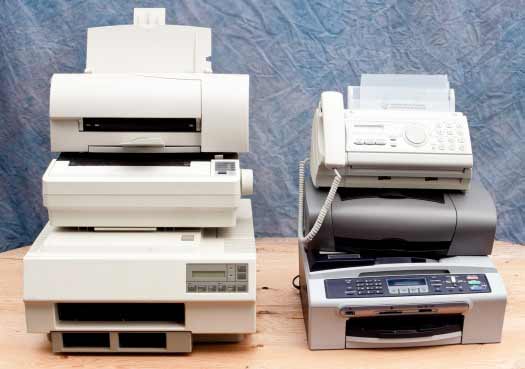Recycling of waste electrical and electronic equipment into high-value polymers

Electrical and electronic products are firmly established in everyday life. At the end of their useful service life these products, so-called waste electrical and electronic equipment (WEEE), must be recycled. The products often consist of a number of different plastics, many of which contain brominated flame retardants. Some of the latter are persistent organic pollutants (POPs) or listed in the RoHS directive of the European Commission. These facts present particular challenges for recycling waste electrical and electronic equipment. Currently less than 25% of the plastics in waste electrical and electronic equipment are recycled.
Separation of plastics in waste electrical and electronic equipment prior to recycling
Prior to being recycled, waste electrical and electronic equipment in Germany is separated into different groups that are then specifically pretreated. The current state-of-the art is to separate polyolefins and flame retardant free (or low) ABS and PS from other plastics into a light fraction via density separation. A further separation based on density separates ABS and PS from the polyolefins. Then electrostatic sorting methods finally separate the ABS and PS. Other plastics such as high-value PC/ABS end up in the bromine-containing plastic fraction. These are incinerated for energy recovery at high cost and are hence not available for other recycling processes.
Trials of dry separation of plastics in waste electrical and electronic equipment
The objective of the WEEEsense project is to use an innovative dry process chain to separate high-value ABS, PS, and PC/ABS polymers from WEEE that are compliant with RoHS and REACH. To do this, the recycling company ZME Elektronik Recycling GmbH is collecting and sorting selected styrene-rich waste electrical and electronic equipment and subjecting the equipment to a special initial procedure. Then, specialized company ReToVal GmbH shreds the material, removes metal, and spectroscopically sorts the material to produce low metal/halogen mixed plastic fractions. These are then taken to Unisensor Sensorsysteme GmbH for sorting by color-independent laser-induced fluorescence spectroscopy into ABS, PS, and PC/ABS plastic types. Subsequently, Hoffmann + Voss GmbH takes the ground material and manufactures high-quality recompounds suitable for making new electrical and electronic equipment. In parallel, the project partners will conduct an economic feasibility study of the relevant processes. The Fraunhofer IVV is coordinating the project and performing analytical testing. The intermediate fractions and products are being analyzed for hazardous substances, contaminants, quality, and yield. Opportunities for optimization will be identified.
Dry separation enables the manufacture of quality polymers from WEEE
The particular benefit of this process chain is that valuable technical plastics can be reprocessed into high-quality polymer recyclates - rather than merely disposing of the plastic which is the current practice. The recycled polymers can then be reutilized to make new electrical and electronic equipment. The WEEEsense project is recovering PS, ABS, and PC/ABS as example polymers. However, other high-quality thermoplastics from waste electrical and electronic equipment, such as PA and PPE/PS, can also be recovered using this process chain. The transfer of the research results to other plastic-rich sorting fractions is possible such as shredder residues from end-of-life cars and would provide a key contribution to the reutilization of plastic-rich material streams.
Project term: |
2019 to 2021 |
Project management |
Project management Jülich GmbH PTJ / Federal Ministry of Education and Research (BMBF) |
Related previous projects: |
|
 Fraunhofer Institute for Process Engineering and Packaging IVV
Fraunhofer Institute for Process Engineering and Packaging IVV